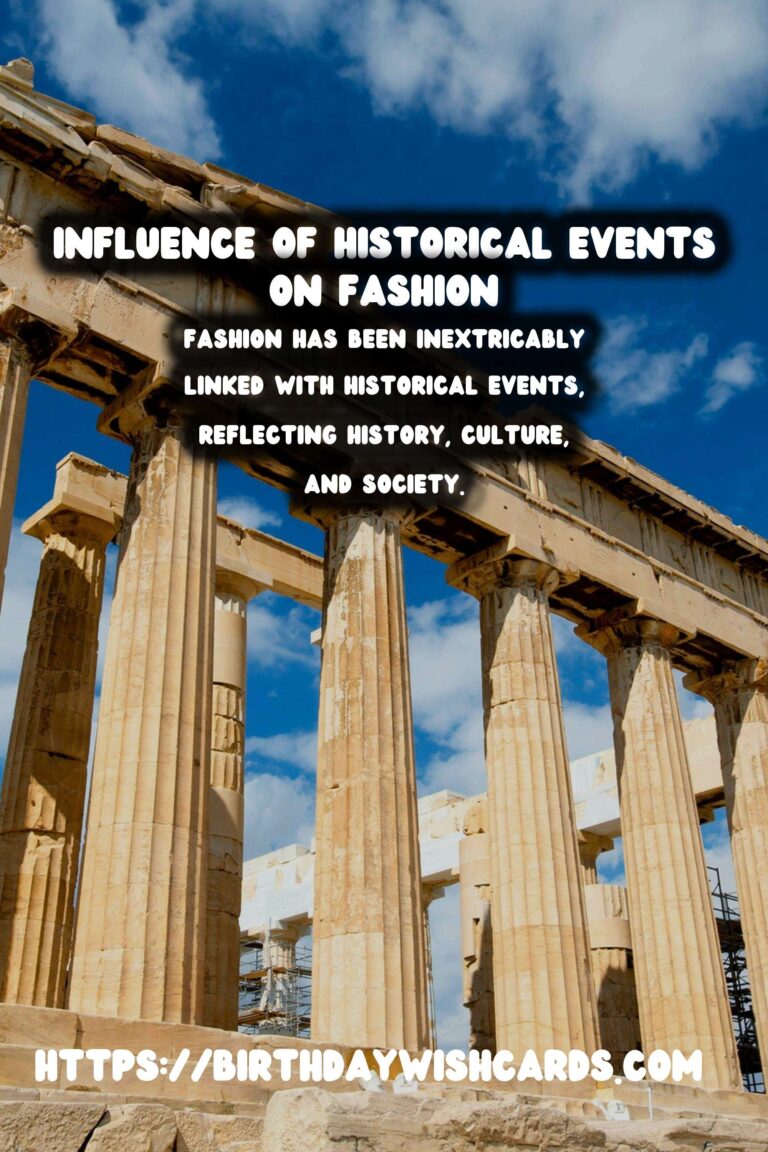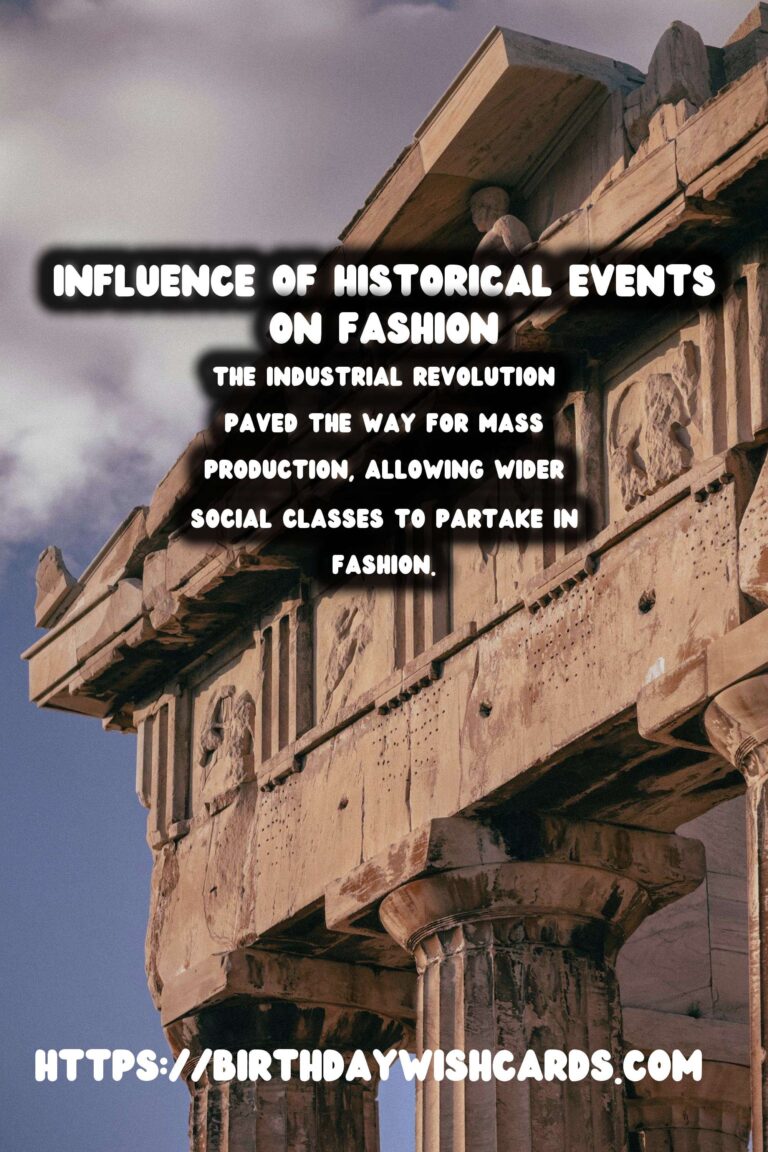
Fashion, a continuous reflection of history, culture, and society, has been inextricably linked with historical events. From the elegant drapery of ancient civilizations to the bold designs of the 20th century, each era gives us a unique lens through which we can view the past. This article explores how specific historical events have significantly influenced fashion trends across various epochs.
The Impact of Ancient Civilizations
In ancient times, fashion was not merely about aesthetics; it represented power, status, and religious beliefs. The Egyptians, known for their love of finery, utilized linen to create garments that varied from simple sheath dresses to the elaborate robes of the Pharaoh. Greek fashion emphasized simplicity and elegance, often depicting the philosophical ideals of beauty and proportional harmony. The use of drapery in Greek and Roman attire not only served practical needs but also showcased the societal hierarchies of the time.
The Middle Ages: The Rise of European Power
As European societies emerged from the shadows of the Dark Ages, the fashion of the Middle Ages took a richly ornate turn. The clothing styles during this time were heavily influenced by one’s social standing and were often a reflection of the feudal hierarchy. The Crusades introduced new textiles and styles to Europe, with silk and brocade becoming symbols of status. Sumptuary laws, designed to maintain social hierarchies, governed the extravagance of clothing among different classes.
The Renaissance: Rebirth of Creativity and Style
The Renaissance period marked a significant shift in fashion, driven by a newfound interest in art and humanism. The opulence of the Renaissance courts encouraged elaborate clothing and intricate designs. The discovery of the New World brought new dyes and fabrics, expanding the fashion palette. With cross-cultural exchanges at an all-time high, European fashion began incorporating elements from the Ottoman Empire and the Far East, creating a rich tapestry of styles.
Fashion in the Age of Enlightenment
The 18th century, the Age of Enlightenment, introduced fashion that mirrored the intellectual advancements of the era. With an emphasis on reason and logic, clothing became more structured and formal. The French Revolution, however, was a catalyst for change, propelling the emergence of simpler, more egalitarian fashions as a statement of solidarity and democratic values. The end of the century saw the rise of the Neoclassical style, inspired by the rediscovery of ancient Greek and Roman aesthetics.
The Industrial Revolution: Mechanization and Mass Production
The Industrial Revolution paved the way for the mass production of clothing and the democratization of fashion. With textile mills producing affordable fabrics, garments were no longer exclusive to the wealthy. The Victorian era, marked by industrial progress, brought about elaborate styles, including corsets and crinolines that symbolized the virtuous and domestic values of the time. The increased availability of clothing allowed wider social classes to partake in fashion, creating a market for ready-to-wear apparel.
The 20th Century: Wars and Liberation Movements
The 20th century, fraught with wars and social changes, had a dramatic effect on fashion. The World Wars introduced utilitarian aesthetics, with fashion adapting to scarcity and functionality. The flapper dresses of the 1920s represented a break from tradition, born from women’s newfound social freedoms. The mid-century saw fashion echo political movements, such as the Civil Rights and feminist movements, challenging traditional norms and heralding the rise of casual, unisex styles.
Conclusion: A Tapestry of Timeless Influence
Fashion, as a manifestation of historical currents, continues to evolve while weaving in threads from our rich past. As society moves forward, the reflections of pivotal historical events on clothing provide a narrative that is both personal and universal. Thus, the tapestry of fashion is one that, though ever-changing, remains anchored in history, offering insight and inspiration for future generations.
Fashion has been inextricably linked with historical events, reflecting history, culture, and society. The Industrial Revolution paved the way for mass production, allowing wider social classes to partake in fashion.
#HistoricalFashion #FashionHistory

